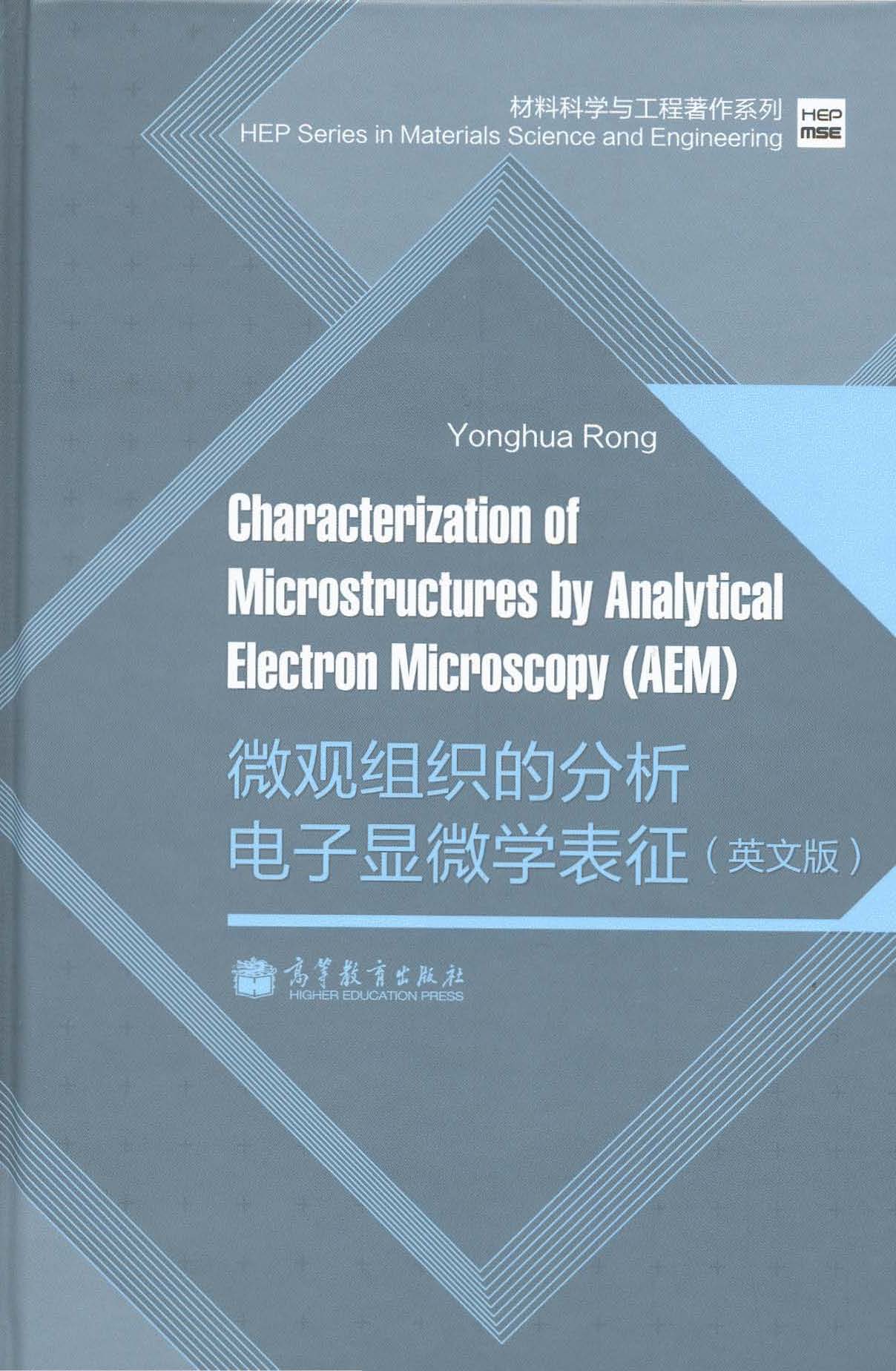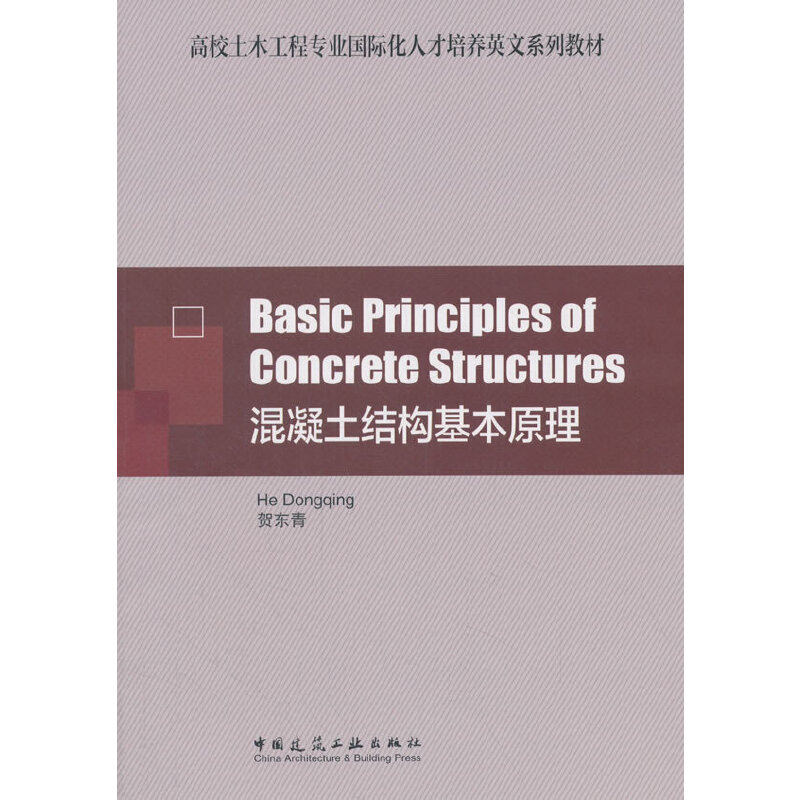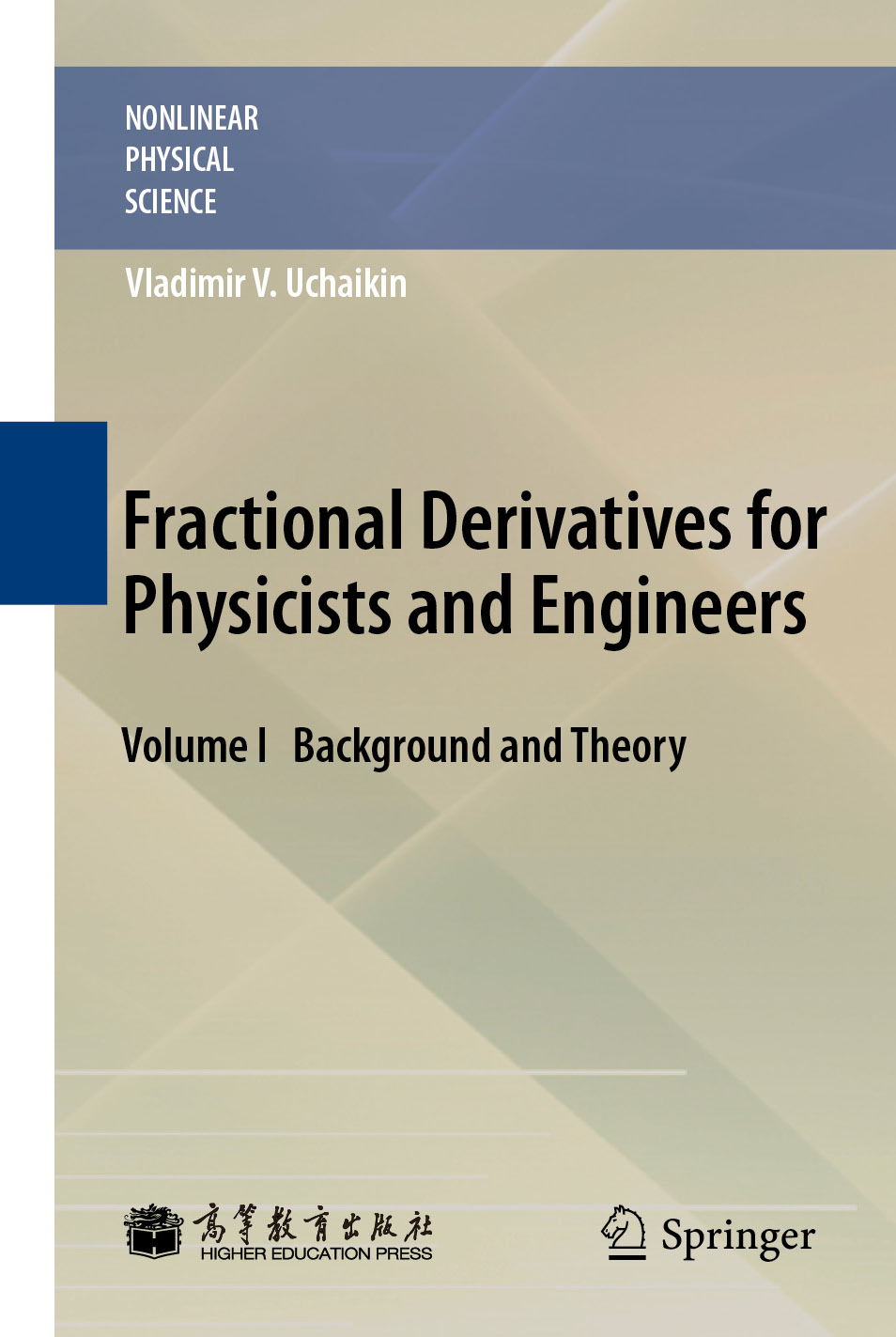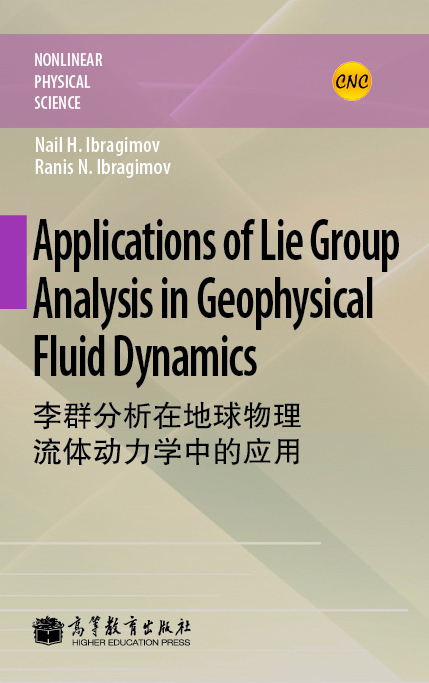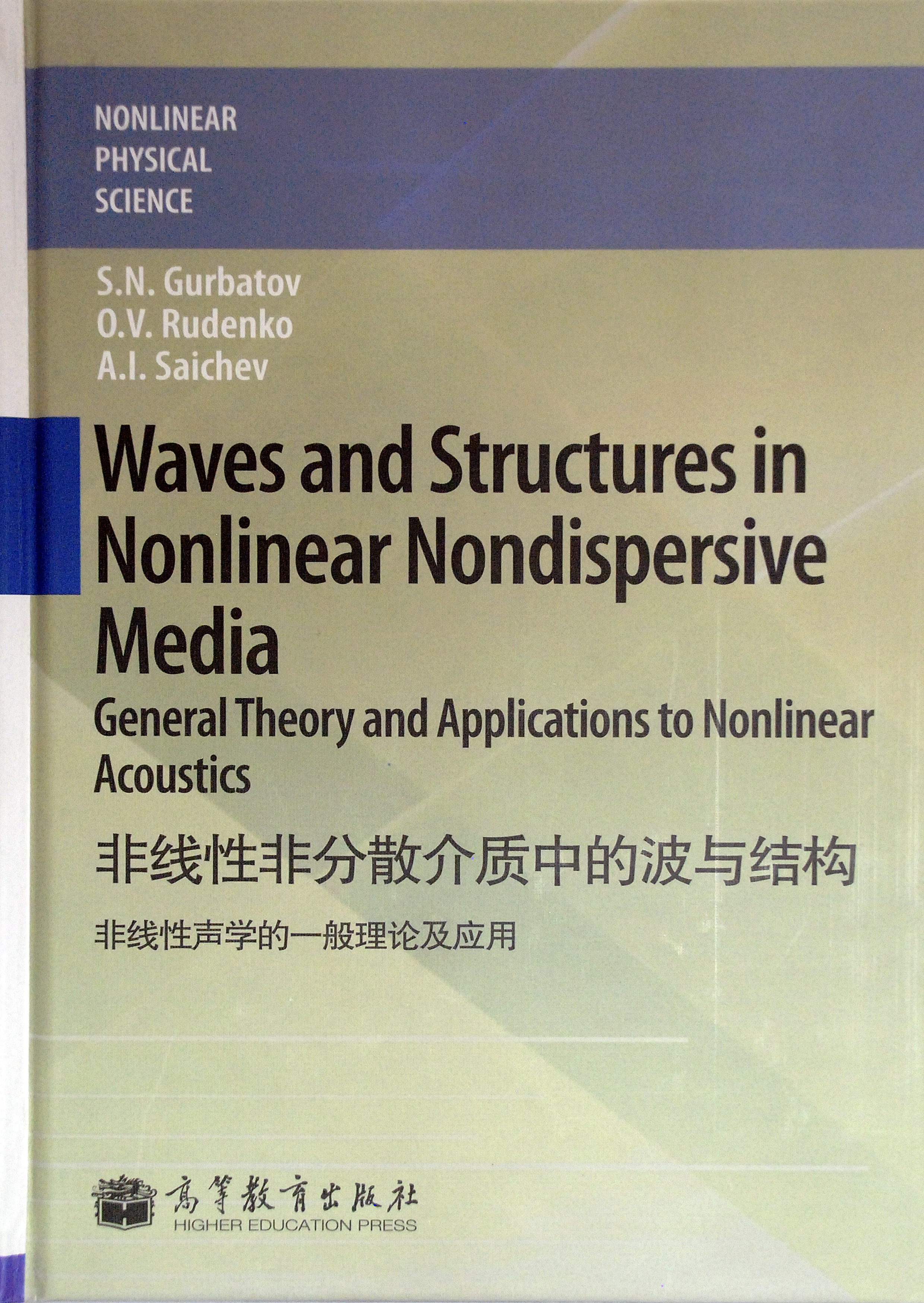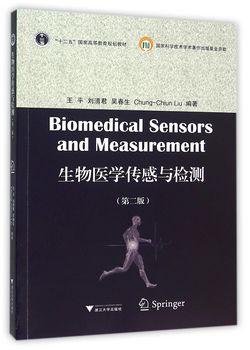微观组织的分析电子显微学表征(英文版)
定价:¥119.00
作者: Yonghua Rong
出版时间:2012-01
出版社:高等教育出版社
- 高等教育出版社
- 9787040300925
- 1版
- 227347
- 48266610-4
- 精装
- 16开
- 2012-01
- 820
- 552
- 工学
- 材料类
- 材料、电子
- 研究生及以上
内容简介
《材料科学与工程著作系列:微观组织的分析电子显微学表征(英文版)》介绍了分析电子显微学(AEM)的基本概念和操作技术,聚集于相恋和形变中位错的 AEM研究。同时通过大量的例子阐述衍射晶体学的物理概念和数学分析方法,例如相变中位向关系的定量预测等,以便读者加深理解和拓展视野。
《材料科学与工程著作系列:微观组织的分析电子显微学表征(英文版)》可作为材料科学与工程以及凝聚态物理领域的学者和研究生的参考书。
目录
chapter 1 Analytical Electron Microscope (AEM)
1.1 Brief introduction of AEM history
1.2 Interaction between electrons and specimen and signals used by AEM
1.3 Electron wavelength and electromagnetic lens
1.3.1 Electron wavelength
1.3.2 Electromagnetic lens
1.4 Structure and function of AEM
1.4.1 Illumination system
1.4.2 Specimen holders
1.4.3 Imaging system
1.4.4 Image recording
1.4.5 Power supply system and vacuum system
1.4.6 Computer control
1.5 The principle of imaging, magnifying and diffracting
1.6 Theoretical resolution limit
1.7 Depth of focus and depth of field
1.8 Spherical aberration-corrected TEMs
References
chapter 2 Specimen Preparation
2.1 Traditional techniques
2.1.1 Replica
2.1.2 Preparation of powders
2.1.3 Film preparation for plan view
2.1.4 Film preparation from a bulk metallic sample
2.1.5 Film preparation from a bulk nonmetallic sample
2.2 Special techniques
2.2.1 Cross-sectional specimen preparation
2.2.2 Cleaving and small angle cleavage technique
2.2.3 Ultramicrotomy
2.2.4 Focused ion beam technique
References
chapter 3 Electron Diffraction
3.1 Comparison of electron diffraction with X-ray diffraction
3.2 Conditions of diffraction
3.2.1 Geometric condition
3.2.2 Physical condition
3.2.3 Diffraction deviating from exact Bragg condition
3.3 Basic equation used for analysis of electron diffraction pattern
3.3.1 Diffraction in an electron diffractometer
3.3.2 Diffraction in a TEM
3.4 Principle and operation of selected area electron diffraction
3.5 Rotation of image relative to diffraction pattern
3.6 Diffraction patterns of polycrystal and their applications
3.6.1 Formation and geometric features of diffraction patterns for polycrystal
3.6.2 Applications of ring patterns
3.7 Geometric features of diffraction patterns of single crystals
3.7.1 Geometric features and diffraction intensity of a single crystal pattern
3.7.2 Indexing methods of single crystal diffraction patterns
3.8 Main applications of single crystal pattern
3.8.1 Identification of phases
3.8.2 Determination of orientation relationship
3.9 Diffraction spot shift by stacking faults and determination of stacking fault probability
3.9.1 Diffraction from planar defect
3.9.2 Determination of stacking fault probability in HCP crystal
3.9.3 Determination of stacking fault probability in FCC crystal
3.10 Systematic tilting technique and its applications
3.10.1 Systematic tilting technique by double tilt holder
3.10.2 Determination of electron beam direction
3.10.3 Determination of misorientation axis/angle pair
3.10.4 Determining phase using reconstruction of reciprocal lattice
3.10.5 Trace analysis
3.10.6 Unambiguity of orientation determination
3.11 Characteristics and indexing of complex electron diffraction patterns
3.11.1 Diffraction patterns with the orientation relationship between two phases
3.11.2 Twin diffraction pattern
3.11.3 High order Laue diffraction pattern
3.11.4 Superlattice diffraction pattern
3.11.5 Double diffraction pattern
3.11.6 Moir\'e patterns
3.11.7 Diffraction pattern of modulated structure
3.11.8 Long-period stacking order structures and their diffraction patterns
3.11.9 Kikuchi line pattern
References
chapter 4 Mathematics Analysis in Electron Diffraction and Crystallography
4.1 Transformation matrices of orientation relationships
4.1.1 Introduction to matrix analysis
4.1.2 Prediction of an arbitrary zone of diffraction pattern based on orientation relationship
4.1.3 Transformation matrices for indices of direction and plane in different coordinate systems
4.1.4 Mathematics description of characteristics parameters of coincidence site lattice
4.1.5 Transformation matrix of twinning orientation relationship
4.2 Prediction of orientation relationships
4.2.1 Introduction
4.2.2 Edge-to-edge matching
4.2.3 Invariant line strain model
4.2.4 O-line model
4.3 Systematic extinction caused by crystallographic symmetry
4.3.1 Symmetry elements and their corresponding operation matrices
4.3.2 Combination laws of macro-symmetry elements
4.3.3 Derivations of the point groups and their transition matrices
4.3.4 Relationships between point groups, crystal systems and Bravais lattices
4.3.5 Translational symmetry elements in space groups
4.3.6 Equivalent positions
4.3.7 Two dimensional lattice, plane point groups and plane groups
4.3.8 Symmetry of electron diffraction patterns
4.3.9 Systematic extinction
4.3.10 Example of determining crystal structures by crystal symmetry analysis
References
chapter 5 Diffraction Contrast
5.1 Classification of electron image contrasts and imaging modes
5.1.1 Imaging principles of mass-thickness contrast
5.1.2 Principle of diffraction contrast imaging
5.1.3 Imaging principle of phase contrast
5.2 Kinematical theory of diffraction contrast
5.2.1 Basic assumption and approximate treatment
5.2.2 Kinematical equation of diffraction contrast for perfect crystals
5.2.3 Thickness fringes and bend contours
5.2.4 Kinematical equation of diffraction contrast for imperfect crystals
5.2.5 Determination of natures of stacking fault and dislocation by diffraction contrast
5.3 Dynamical theory of diffraction contrast (wave-optical formulation)
5.3.1 Scattering of electrons from atoms
5.3.2 Dynamical equation and diffraction contrast for perfect crystals
5.3.3 Solution of the equations of the dynamical theory in perfect crystals
5.3.4 Bend contours and thickness fringes
5.3.5 Anomalous absorption effect
5.3.6 Dynamical equations of diffracted contrast for an imperfect crystal
5.3.7 Example of computer simulation of dislocations based on two-beam dynamical theory
References
chapter 6 High Resolution and High Spatial Resolution of Analytical Electron Microscopy
6.1 HRTEM and its applications
6.1.1 Electron scattering
6.1.2 Fourier transform and convolution
6.1.3 Two important functions describing the formation of high resolution images
6.1.4 Direct explanation of high resolution image for WPOA
6.1.5 High resolution images of thick crystal specimens
6.1.6 Application examples of high resolution images
6.2 CBED and its applications
6.2.1 Formation and features of CBED patterns
6.2.2 Identification of crystal symmetry
6.2.3 Determination of carbon content by CBED
6.2.4 CBED for strain determination at the nanoscale
6.3 EDS and its quantitative microanalysis
6.3.1 Characteristic X-rays and their detection
6.3.2 Quantitative analysis
6.3.3 Spatial resolution and detection limits
6.4 EELS and its quantitative microanalysis
6.4.1 Electron energy loss spectrometer
6.4.2 EELS spectrum
6.5 Brief introduction to advanced AEMs
6.5.1 Negative Cs imaging (NCSI) technique
6.5.2 Atomic resolution Z-contrast imaging technique
6.5.3 Electron holography
References
Appendix
A.1 Physical constants and conversion factors
A.2 Geometrical relationships of crystals
A.3 Table of angles between planes (or directions) of cubic crystal
A.4 Electron diffraction patterns (EDPs) of FCC, BCC and HCP
A.5 Standard high order Laue diffraction patterns of FCC, BCC and HCP
A.6 Eight kinds of typical crystal structures
A.7 Stereographic projections of cubic and hexagonal systems
A.8 Relationship of parameters of coincidence site lattice (CSL) in cubic crystal
A.9 Table of atomic scattering factors
A.10 Table of characteristic X-ray's wavelength (
A ) and energy (keV)
A.11 Table of electron binding energy for electron energy loss spectroscopy (EELS)
References
Index
版权
1.1 Brief introduction of AEM history
1.2 Interaction between electrons and specimen and signals used by AEM
1.3 Electron wavelength and electromagnetic lens
1.3.1 Electron wavelength
1.3.2 Electromagnetic lens
1.4 Structure and function of AEM
1.4.1 Illumination system
1.4.2 Specimen holders
1.4.3 Imaging system
1.4.4 Image recording
1.4.5 Power supply system and vacuum system
1.4.6 Computer control
1.5 The principle of imaging, magnifying and diffracting
1.6 Theoretical resolution limit
1.7 Depth of focus and depth of field
1.8 Spherical aberration-corrected TEMs
References
chapter 2 Specimen Preparation
2.1 Traditional techniques
2.1.1 Replica
2.1.2 Preparation of powders
2.1.3 Film preparation for plan view
2.1.4 Film preparation from a bulk metallic sample
2.1.5 Film preparation from a bulk nonmetallic sample
2.2 Special techniques
2.2.1 Cross-sectional specimen preparation
2.2.2 Cleaving and small angle cleavage technique
2.2.3 Ultramicrotomy
2.2.4 Focused ion beam technique
References
chapter 3 Electron Diffraction
3.1 Comparison of electron diffraction with X-ray diffraction
3.2 Conditions of diffraction
3.2.1 Geometric condition
3.2.2 Physical condition
3.2.3 Diffraction deviating from exact Bragg condition
3.3 Basic equation used for analysis of electron diffraction pattern
3.3.1 Diffraction in an electron diffractometer
3.3.2 Diffraction in a TEM
3.4 Principle and operation of selected area electron diffraction
3.5 Rotation of image relative to diffraction pattern
3.6 Diffraction patterns of polycrystal and their applications
3.6.1 Formation and geometric features of diffraction patterns for polycrystal
3.6.2 Applications of ring patterns
3.7 Geometric features of diffraction patterns of single crystals
3.7.1 Geometric features and diffraction intensity of a single crystal pattern
3.7.2 Indexing methods of single crystal diffraction patterns
3.8 Main applications of single crystal pattern
3.8.1 Identification of phases
3.8.2 Determination of orientation relationship
3.9 Diffraction spot shift by stacking faults and determination of stacking fault probability
3.9.1 Diffraction from planar defect
3.9.2 Determination of stacking fault probability in HCP crystal
3.9.3 Determination of stacking fault probability in FCC crystal
3.10 Systematic tilting technique and its applications
3.10.1 Systematic tilting technique by double tilt holder
3.10.2 Determination of electron beam direction
3.10.3 Determination of misorientation axis/angle pair
3.10.4 Determining phase using reconstruction of reciprocal lattice
3.10.5 Trace analysis
3.10.6 Unambiguity of orientation determination
3.11 Characteristics and indexing of complex electron diffraction patterns
3.11.1 Diffraction patterns with the orientation relationship between two phases
3.11.2 Twin diffraction pattern
3.11.3 High order Laue diffraction pattern
3.11.4 Superlattice diffraction pattern
3.11.5 Double diffraction pattern
3.11.6 Moir\'e patterns
3.11.7 Diffraction pattern of modulated structure
3.11.8 Long-period stacking order structures and their diffraction patterns
3.11.9 Kikuchi line pattern
References
chapter 4 Mathematics Analysis in Electron Diffraction and Crystallography
4.1 Transformation matrices of orientation relationships
4.1.1 Introduction to matrix analysis
4.1.2 Prediction of an arbitrary zone of diffraction pattern based on orientation relationship
4.1.3 Transformation matrices for indices of direction and plane in different coordinate systems
4.1.4 Mathematics description of characteristics parameters of coincidence site lattice
4.1.5 Transformation matrix of twinning orientation relationship
4.2 Prediction of orientation relationships
4.2.1 Introduction
4.2.2 Edge-to-edge matching
4.2.3 Invariant line strain model
4.2.4 O-line model
4.3 Systematic extinction caused by crystallographic symmetry
4.3.1 Symmetry elements and their corresponding operation matrices
4.3.2 Combination laws of macro-symmetry elements
4.3.3 Derivations of the point groups and their transition matrices
4.3.4 Relationships between point groups, crystal systems and Bravais lattices
4.3.5 Translational symmetry elements in space groups
4.3.6 Equivalent positions
4.3.7 Two dimensional lattice, plane point groups and plane groups
4.3.8 Symmetry of electron diffraction patterns
4.3.9 Systematic extinction
4.3.10 Example of determining crystal structures by crystal symmetry analysis
References
chapter 5 Diffraction Contrast
5.1 Classification of electron image contrasts and imaging modes
5.1.1 Imaging principles of mass-thickness contrast
5.1.2 Principle of diffraction contrast imaging
5.1.3 Imaging principle of phase contrast
5.2 Kinematical theory of diffraction contrast
5.2.1 Basic assumption and approximate treatment
5.2.2 Kinematical equation of diffraction contrast for perfect crystals
5.2.3 Thickness fringes and bend contours
5.2.4 Kinematical equation of diffraction contrast for imperfect crystals
5.2.5 Determination of natures of stacking fault and dislocation by diffraction contrast
5.3 Dynamical theory of diffraction contrast (wave-optical formulation)
5.3.1 Scattering of electrons from atoms
5.3.2 Dynamical equation and diffraction contrast for perfect crystals
5.3.3 Solution of the equations of the dynamical theory in perfect crystals
5.3.4 Bend contours and thickness fringes
5.3.5 Anomalous absorption effect
5.3.6 Dynamical equations of diffracted contrast for an imperfect crystal
5.3.7 Example of computer simulation of dislocations based on two-beam dynamical theory
References
chapter 6 High Resolution and High Spatial Resolution of Analytical Electron Microscopy
6.1 HRTEM and its applications
6.1.1 Electron scattering
6.1.2 Fourier transform and convolution
6.1.3 Two important functions describing the formation of high resolution images
6.1.4 Direct explanation of high resolution image for WPOA
6.1.5 High resolution images of thick crystal specimens
6.1.6 Application examples of high resolution images
6.2 CBED and its applications
6.2.1 Formation and features of CBED patterns
6.2.2 Identification of crystal symmetry
6.2.3 Determination of carbon content by CBED
6.2.4 CBED for strain determination at the nanoscale
6.3 EDS and its quantitative microanalysis
6.3.1 Characteristic X-rays and their detection
6.3.2 Quantitative analysis
6.3.3 Spatial resolution and detection limits
6.4 EELS and its quantitative microanalysis
6.4.1 Electron energy loss spectrometer
6.4.2 EELS spectrum
6.5 Brief introduction to advanced AEMs
6.5.1 Negative Cs imaging (NCSI) technique
6.5.2 Atomic resolution Z-contrast imaging technique
6.5.3 Electron holography
References
Appendix
A.1 Physical constants and conversion factors
A.2 Geometrical relationships of crystals
A.3 Table of angles between planes (or directions) of cubic crystal
A.4 Electron diffraction patterns (EDPs) of FCC, BCC and HCP
A.5 Standard high order Laue diffraction patterns of FCC, BCC and HCP
A.6 Eight kinds of typical crystal structures
A.7 Stereographic projections of cubic and hexagonal systems
A.8 Relationship of parameters of coincidence site lattice (CSL) in cubic crystal
A.9 Table of atomic scattering factors
A.10 Table of characteristic X-ray's wavelength (
A ) and energy (keV)
A.11 Table of electron binding energy for electron energy loss spectroscopy (EELS)
References
Index
版权

